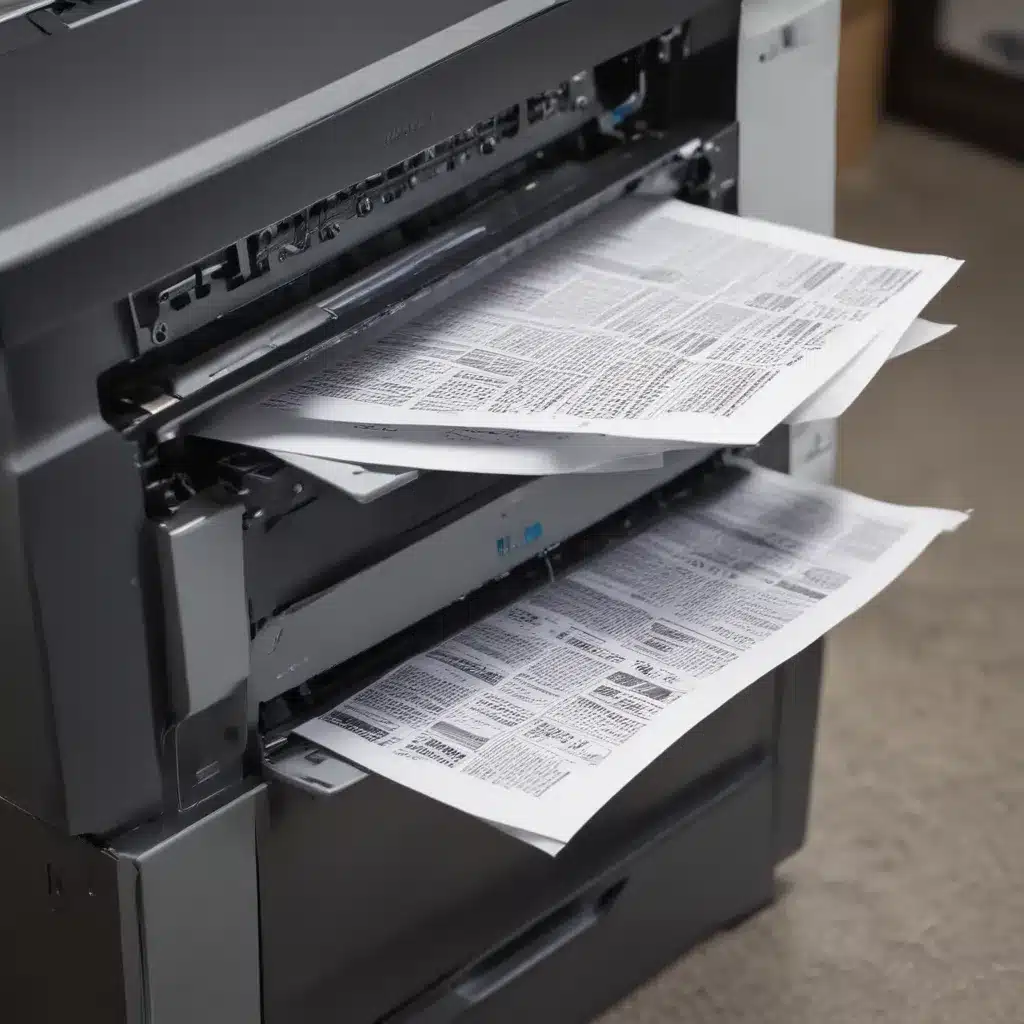
Identifying the Root Cause of Printing Issues
As a seasoned printing professional, I’ve encountered a wide range of printing problems throughout my career. Over the years, I’ve developed a systematic approach to troubleshooting these issues, which has allowed me to provide efficient and effective solutions to my clients. In this comprehensive guide, I’ll share my expertise and walk you through the process of identifying the root cause of common printing problems, enabling you to resolve these challenges with confidence.
One of the keys to successful troubleshooting is the ability to isolate the problem. I often begin by asking a series of questions to gather information about the specific issue at hand. What type of printer are you using? When did the problem first occur? Have you made any recent changes to your printer or computer settings? By gathering this contextual information, I can start to narrow down the potential causes and develop a targeted plan of action.
Another important aspect of troubleshooting is understanding the various components involved in the printing process. The printer itself, the computer or device sending the print job, the software or drivers used, and the media (paper, ink, or toner) all play a crucial role. Examining each of these elements can provide valuable clues about the root cause of the problem.
Common Printing Problems and Solutions
Printer Not Responding or Connecting
One of the most common printing problems I encounter is when the printer simply doesn’t respond or connect to the computer. This can be caused by a variety of factors, such as a loose cable connection, outdated or incompatible drivers, or even a hardware issue with the printer itself. To troubleshoot this problem, I recommend checking the physical connections, ensuring the printer is powered on, and verifying that the necessary drivers are installed and up-to-date. If the issue persists, I may suggest trying a different USB cable or exploring the possibility of a hardware malfunction.
Poor Print Quality
Another frequent issue is poor print quality, which can manifest in various ways, such as blurry or pixelated text, faded or streaked colors, or uneven ink or toner coverage. This can be caused by a range of factors, including low ink or toner levels, misaligned print heads, or even environmental factors like temperature and humidity. To address this problem, I recommend checking the ink or toner levels, cleaning the printer’s print heads, and ensuring that the printer is set to the appropriate paper type and quality settings.
Paper Jams and Feed Issues
Paper jams and feed issues are also common printing problems that can be incredibly frustrating. These issues can be caused by a variety of factors, such as damaged or incompatible paper, incorrect paper loading, or even a mechanical issue within the printer. When faced with a paper jam, I advise carefully removing the stuck paper, checking for any obstructions or damage, and ensuring that the paper tray is loaded correctly. If the problem persists, I may suggest consulting the printer’s user manual or contacting the manufacturer for further guidance.
Unexpected Printer Behavior
In some cases, I’ve encountered unexpected printer behavior, such as spontaneous printing, incorrect page orientation, or unexpected margin settings. These issues can be tricky to diagnose, as they may be caused by a combination of factors, including software conflicts, incorrect driver settings, or even malware. To troubleshoot these problems, I recommend checking the printer’s settings, verifying the software configuration, and potentially running a virus scan to rule out any malicious software.
Preventive Maintenance and Best Practices
In addition to troubleshooting specific issues, I also emphasize the importance of regular printer maintenance and best practices to help avoid future problems. Regularly cleaning the printer, replacing consumables (ink, toner, rollers) as needed, and ensuring the printer is located in a suitable environment can all contribute to its overall performance and longevity. I also recommend backing up important documents and keeping regular maintenance schedules to proactively identify and address any potential issues.
Seeking Professional Assistance
While I’ve outlined some of the most common printing problems and their potential solutions, there may be times when the issue is beyond your expertise or requires specialized attention. In such cases, I advise seeking the assistance of a professional printing technician or the printer manufacturer’s support team. These experts have the knowledge and resources to thoroughly diagnose and resolve even the most complex printing problems, ensuring that your printing operations run smoothly and efficiently.
Conclusion
Troubleshooting printing problems can be a daunting task, but with the right approach and a solid understanding of the underlying components, it can be a manageable process. By following the steps I’ve outlined in this guide, you’ll be better equipped to identify the root cause of your printing issues and implement effective solutions. Remember, regular maintenance and best practices can also go a long way in preventing future problems and ensuring the longevity of your printing equipment. If you encounter any challenges that are beyond your capabilities, don’t hesitate to seek professional assistance. I hope this guide has provided you with the knowledge and confidence to tackle your printing problems head-on.












